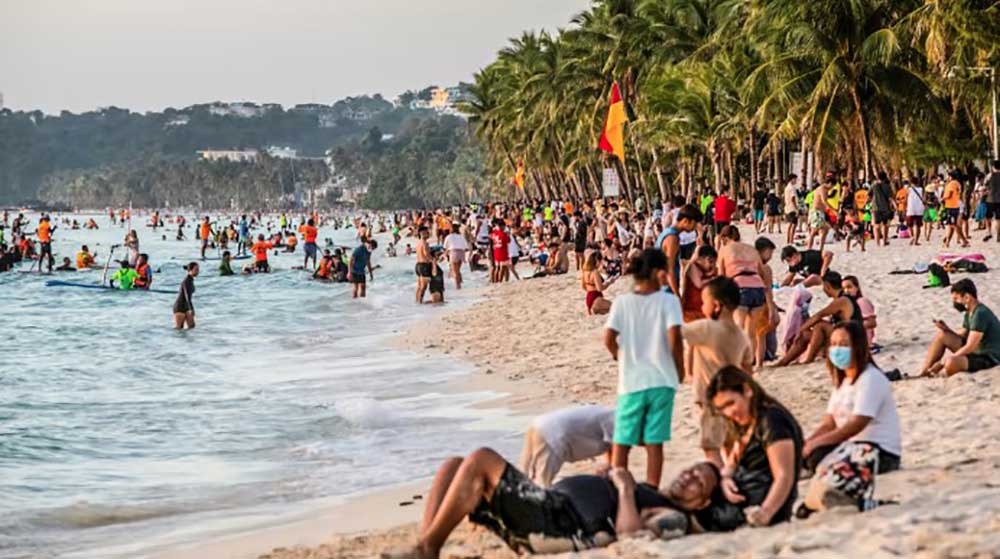The Philippines continues to beef up its promotion of opportunity markets and its collaboration with regional neighbors as it aims to sustain the country’s upward trend in international visitor arrivals this year.
Christina Garcia Frasco, Department of Tourism Secretary, said that while the country is aiming to register 7.7 million international tourist arrivals this year, this is a “moving target” considering the existing challenges the industry is facing including specific geopolitical issues.
“We recognize the challenges that persist, especially from the arrivals from the Chinese market, so it is a moving target I would say; taking into account the realities that we face. Even so, we are working as hard as we can to make sure that not only on the arrivals but more importantly, on the visitor receipts. Our economy continues to thrive through tourism,” she said.
As of August 7, 2024, the country has already received a total of 3.6 million inbound visitors, of which 92.13 percent are foreigners while the remaining 7.87 percent are overseas Filipinos.
South Korea still tops the list of source markets in terms of arrivals with a solid 960,809 or 26.37 percent; followed by the United States of America with 590,861, China with 223,954, Japan with 221,430, and Australia with 152,835.
Taiwan, Canada, the United Kingdom, Singapore, and Malaysia, complete the sixth to the tenth list.
Additionally, from January 1 to July 31, 2024, the country already earned P323.68 billion in estimated visitor receipts. This was 13.18 percent higher than the P285.99 billion earned in the same period last year.
“We are hoping to be able to attain the target, at the same time, we are rolling up our sleeves in terms of the challenges that confound us,” the Secretary said.
“We continue our very heavy promotions in terms of our top source markets so that we would be able to increase tourist arrivals from these areas and as I have mentioned, these include South Korea, the United States, Canada, Australia, Japan, and including Europe,” she said.
Even with the Philippines’ efforts to enhance its global tourism competitiveness, the tourism chief highlighted the country’s observation of its Asean counterparts as benchmarks for enhancing tourism.
She likewise noted that sustainable and responsible tourism remain the pivotal aspects of regional collaboration.
“We recognize our neighbors in the Asean as models for how we can further improve Philippine tourism. We have forged engagements with our Asean neighbors in terms of ensuring that we are able to get a share of their tourism arrivals as well,” she said.
“We have found commonalities among us, which then encourages us as far as our growth and development, now that we see them not just as our competitors, but as our collaborators,” she added.
She noted that the DOT is strategically working with Thailand for the two countries-one destination arrangement.

“We are heavily pursuing the continuation of the Bangkok-Cebu flights especially since diving is a very popular tourism product as well as English as a Second Language. We are coordinating with our other Asean neighbors as well, as we are very interested in joining the initiative to obtain one visa and be able to visit several Asean countries,” she said.
The liberalization of visa policies will also entice more visitors to come to the country, primarily the Indian market.
The Secretary also answered pressing questions, including the narratives from some travelers that the Philippines is slowly becoming an “expensive destination” compared with its Asean neighbors.
Among other factors, the Secretary raised that the high demand versus the availability in accommodation establishments and flights are a factor.
“In comparison to our Asean neighbors, data from the Philippine Hotel Owners Association (PHOA) would show that our average $100 per night is actually lower than the average price of hotels in the Asean region. Nonetheless, we recognize that there are external inflationary pressures that dictate upon all the components of pricing,” she said.
“From our end, we are working very closely with PHOA as far as strategically inviting in and continuing to entice tourism investment as far as increasing the number of rooms for the country. We have to understand that the availability of the rooms also dictates the price, and with a very robust domestic market as far as tourism is concerned, it is always in high demand. So, the idea is to increase the number of rooms from its present 221,000 to 440,000 by 2028, as well as to increase the number of flights coming into the country considering that at present, the Philippines ranks sixth as far as the number of international flights and seats coming into the Philippines,” she emphasized.
The Secretary mentioned that the DOT is continuing to push forward its collaboration with the private sector, primarily international aviation partners to improve connectivity to and from the Philippines from existing and emerging tourist markets.
In terms of domestic tourism, the Philippines is the top performer in Asean, according to the tourism chief.
According to the 2022 data of the World Travel and Tourism Council, Philippine domestic tourism generated a staggering $53.3 billion, illustrating its critical role in the recovery of the country post-pandemic. Thailand came second, followed by Indonesia, Malaysia, Vietnam, Singapore, Cambodia, Myanmar, Laos, and Brunei Darussalam.
She described this tourism component as “very encouraging” with many Filipinos flying in and out of their residence to travel locally; some even engaging in “workation” setups at destinations.
While the DOT is currently equalizing all tourism opportunities across all regions, it could not be denied that some destinations, like Batanes, demand a very high fare requirement considering its location, weather condition, among other factors.





